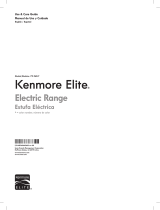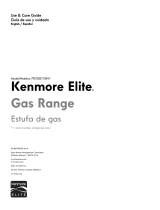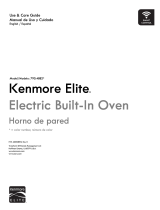
IMPORTANT SAFETY INSTRUCTIONS
Read all instructions before using this appliance.
Save these instructions for future reference.
5
Read and follow the below
instructions and precautions for unpacking,
installing, and servicing your appliance:
• Remove all tape and packaging before
using the range. Destroy the carton and
plastic bags after unpacking the range.
Never allow children to play with
packaging material.
• Proper Installation—Be sure your
appliance is properly installed and
grounded by a qualified technician in
accordance with the National Fuel Gas
Code ANSI Z223.- latest edition, or in
Canada CAN/CGA B149.1, and CAN/
CGA B149.2, and the National Electrical
Code ANSI/NFPA No.70-latest edition, or
in Canada CSA Standard C22.1,
Canadian Electrical Code, Part 1, and
local code requirements. Install only per
installation instructions provided in the
literature package for this range.
• User Servicing—Do not repair or replace
any part of the appliance unless specifi-
cally recommended in the manuals. All
other servicing should be done only by a
qualified technician. This reduces the risk
of personal injury and damage to the
range.
• Ask your dealer to recommend a qualified
technician and an authorized repair
service. Know how to disconnect the
power to the range at the circuit breaker
or fuse box in case of an emergency.
• Never modify or alter the construction of
a range by removing the leveling legs,
panels, wire covers, anti-tip brackets/
screws, or any other part of the range.
• Remove the oven door from any unused
range if it is to be stored or discarded.
• For electric ignition models only--Do not
attempt to operate the range during a
power failure. If the power fails, always
turn off the range. If the range is not
turned off and the power resumes, the
range will begin to operate again. Once
the power resumes, reset the clock and
oven function.
• Cold temperatures can damage the elec-
tronic control. When using this appliance
for the first time, or when the appliance
has not been used for an extended period
of time, be sure the appliance has been in
temperatures above 32ºF (0ºC) for at
least 3 hours before turning on the power
to the appliance.
• Be sure to have an appropriate foam-type
fire extinguisher available, visible, and
easily located near the appliance.
IMPORTANT INSTRUCTIONS FOR USING YOUR OVEN
• Never use your appliance for warming or
heating the room. Doing so may result in
carbon monoxide poisoning.
• Use care when opening oven door, lower
oven door, or warmer drawer (some
models). Stand to the side of the range
when opening the door of a hot oven. Let
hot air or steam escape before you
remove or replace food in the oven.
• Keep oven vent ducts unobstructed. The
oven vent is located below the backguard.
Touching surfaces in this area when the
oven is on may cause severe burns. Do not
place plastic or heat-sensitive items on or
near the oven vent. These items can melt
or ignite.
• Do not cook food on the oven bottom.
Always cook in proper bakeware and
always use the oven racks.
• Do not use the oven or warmer oven /
Lower Oven (if equipped) for storage.



























